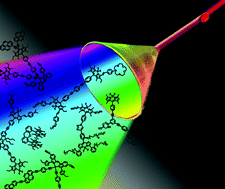Artificial light-harvesting antennae: electronic energy transfer by way of molecular funnels
Abstract
Electronic energy transfer (

* Corresponding authors
a
Laboratoire de Chimie Organique et Spectroscopies Avancées (LCOSA), Ecole Européenne de Chimie, Polymères et Matériaux, Université de Strasbourg, 25 rue Becquerel, 67087 Strasbourg Cedex 02, France
E-mail:
ziessel@inistra.fr
Web: http://www-lmspc.u-strasbg.fr/lcosa
Fax: 33 3 6885 2761
Tel: 33 3 6885 222 2689
b
Molecular Photonics Laboratory, School of Chemistry, Bedson Building, Newcastle University, Newcastle upon Tyne, UK
E-mail:
anthony.harriman@ncl.ac.uk
Electronic energy transfer (

 Please wait while we load your content...
Something went wrong. Try again?
Please wait while we load your content...
Something went wrong. Try again?
R. Ziessel and A. Harriman, Chem. Commun., 2011, 47, 611 DOI: 10.1039/C0CC02687E
To request permission to reproduce material from this article, please go to the Copyright Clearance Center request page.
If you are an author contributing to an RSC publication, you do not need to request permission provided correct acknowledgement is given.
If you are the author of this article, you do not need to request permission to reproduce figures and diagrams provided correct acknowledgement is given. If you want to reproduce the whole article in a third-party publication (excluding your thesis/dissertation for which permission is not required) please go to the Copyright Clearance Center request page.
Read more about how to correctly acknowledge RSC content.
 Fetching data from CrossRef.
Fetching data from CrossRef.
This may take some time to load.
Loading related content
